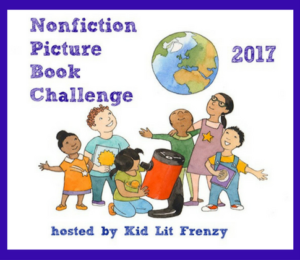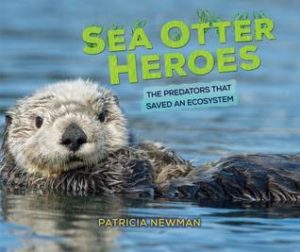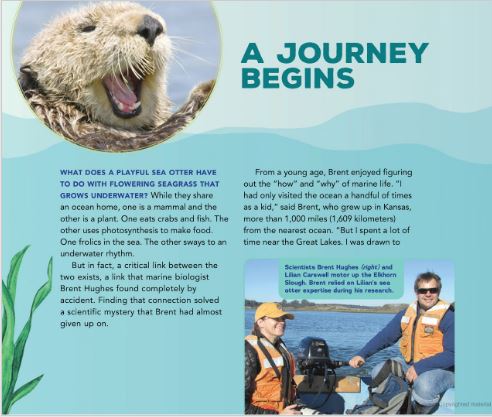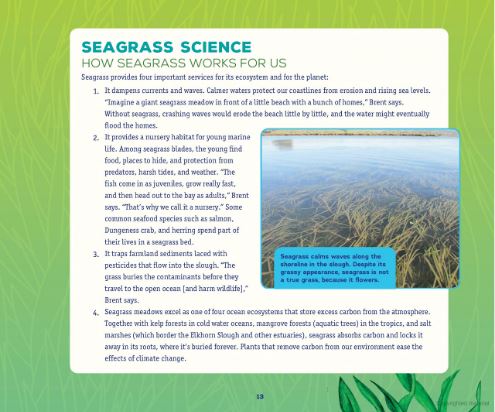Nonfiction Wednesday
Nonfiction Picture Book Wednesday is hosted by Kid Lit Frenzy and was started to help promote the reading of nonfiction texts. Most Wednesdays, we will be participating and will review a nonfiction text (though it may not always be a picture book).
Be sure to visit Kid Lit Frenzy and see what other nonfiction books are shared this week!
Sea Otter Heroes: The Predators That Saved an Ecosystem
Author: Patricia Newman
Published by January 1st, 2017 by Millbrook Press
Summary: Marine biologist Brent Hughes didn’t think sea otters and sea grass had much in common. But his research at Elkhorn Slough, an estuary on Monterey Bay in northern California, revealed a new and surprising connection between the two. The scientist expected this estuary to be overrun with algae due to the fertilizer runoff from surrounding fields. But it wasn’t. Why?
Review: As someone who struggled with biology when in school, I love narrative nonfiction about nature because it helps me fill in education gaps. Sea Otter Heroes looks at trophic cascade (cause and effect relationships within a food chain) and how it affects an ecosystem–so interesting! This information along with the beautiful photographs make this book a scientific journey.
Teachers’ Tools for Navigation: Patricia Newman’s books (Plastics, Ahoy! and Ebola included) are made for classrooms. This text includes not only the cause-effect relationship between otters and sea grass, but also has experiments, information about careers, a glossary, and an afterword about rethinking our relationship with nature giving the reader real ways they can make a difference. This book would be perfect to use in a life science unit or class.
Discussion Questions: What is the “critical link between” sea otters and flowering sea grass?; Finding the link was an accident, what was Brent Hughes studying when he found the connection? What was the proof that the connection existed?; How does the Elkhorn Slough exist?; What are Hughes’s 7 steps to think like a scientist? Observe nature and go through the 7 steps yourself.; What part did sea hares play in Brett Hughes’s experiment?; What is a trophic cascade?; How are what was discovered about the otters similar to the situations with wolves and sperm whales Newman shared?
Flagged Passages:
Read This If You Love: Scientists in the Field books, National Geographic and Animal Planet books about animals
Recommended For:
**Thank you to Lerner and Patricia for providing a copy for review!**








This looks like a fun book. We had a lot of fun watching the sea otters at the Tampa Aquarium a few years ago. Such a silly and playful animal!
They are such great animals; I had never really considered them predators until I saw Zootopia now this book. Puts them in a whole different light 🙂
I love watching sea otters, and didn’t know about this at all. Looks like a great book about them, but also about scientists and how they work. Thanks, Kellee.
It was so interesting to read about! 🙂
Last weekend I heard Patricia Newman talk about this book at a conference and she made the fascinating point that scientists for a long time thought of the bottom of the ecosystem as being the lynchpin but suggested that in this ecosystem the reverse is the true–the top predator is the one who makes the entire ecosystem work.
I would love to hear her talk about her work–jealous!
And that is so fascinating!
I would not have put predators and sea otters together! Plastics, Ahoy was really good, I’ll have to look for this one!
Zootopia taught me they were predators 🙂
Very good blog post. I definitely love this site.
Thanks!
I used to be suggested this website by my cousin. I’m
no longer sure whether or not this post is written by means of him
as no one else know such unique approximately my trouble.
You’re wonderful! Thank you!